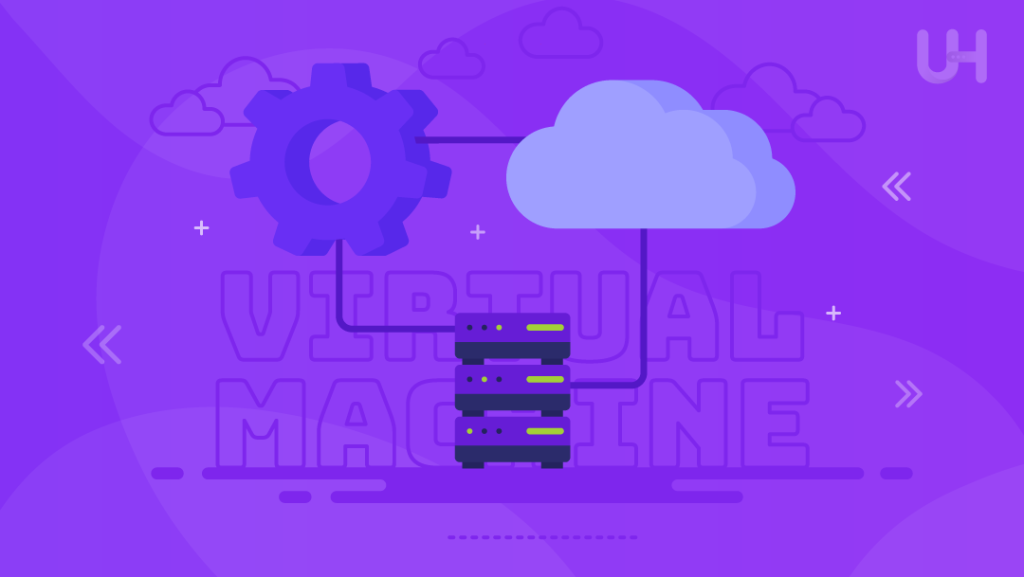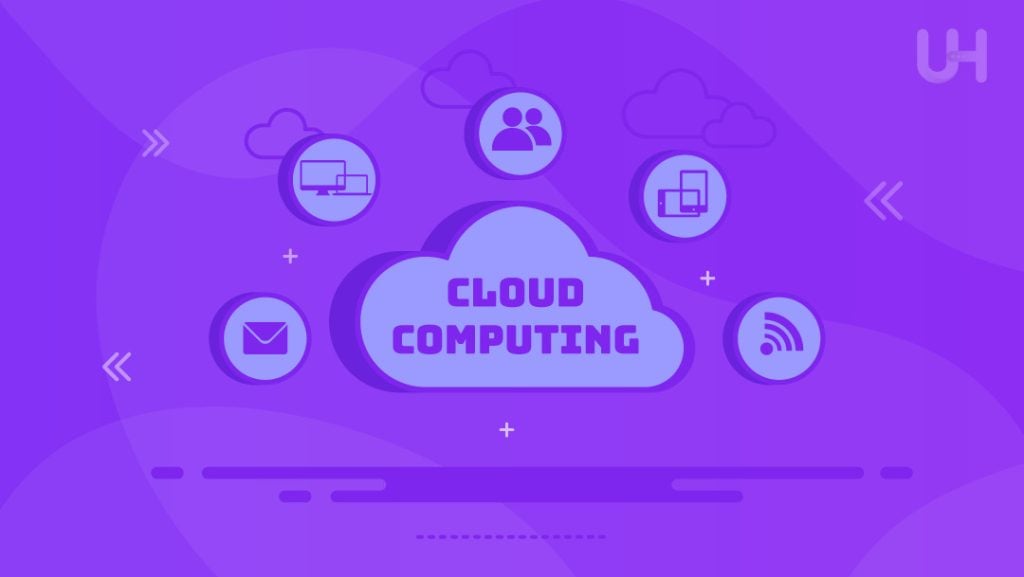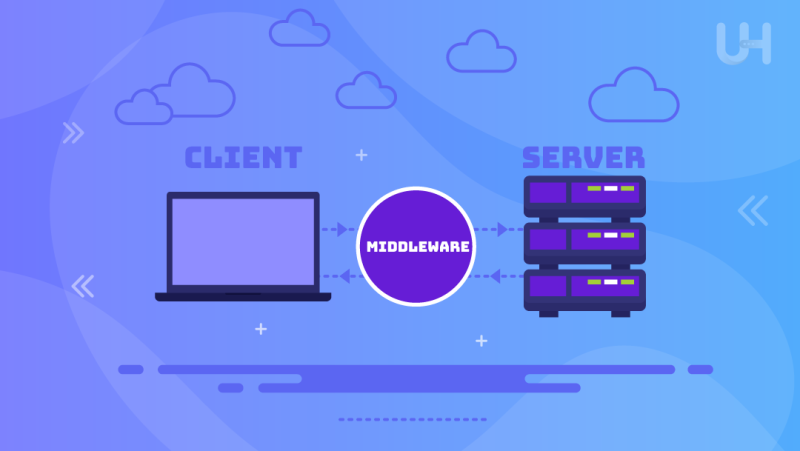The broad term “middleware” has been used in the software industry since the 1960s. The term has an exciting history and is used for multiple purposes. Basically, it is software that runs in the background, ensuring all applications run smoothly and efficiently.
In this article, we will cover what Middleware is, its types, pros and cons, and we’ll end by looking at some examples to ensure you get the perfect idea of how it works.
What is Middleware?
Multiple applications use the power of Middleware to ensure proper connection and communication between applications, tools, and databases. In simpler terms, Middleware works as a translator, which helps applications connect to each other even if they do not understand each other’s languages. It works as a bridge and helps connect applications into a single system, allowing users to utilize the unified services efficiently.
How Does Middleware Work?
Middleware works as a middleman or intermediary to help applications communicate with each other. It restricts the underlying communication process between two components. For instance, the front-end application will only communicate with the Middleware and not directly with the back-end software. This practice allows front-end applications to communicate with the back-end ones without learning their language.
Types of Middleware
Middleware is highly effective in creating complex software, sensors, or even games. Multiple types of Middleware are used to make communication effective in products or software. Let’s discuss a few types of Middleware:
Application Programming Interface
Application programming interface, or API, communicates between Front-end and back-end software. It is commonly found in headless CMS platforms. The API receives data from the back end and delivers it to the front end, allowing customizable web services.
Remote Procedure Call

Remote procedure calls (RCP) are a powerful feature for virtual machines. RCP allows applications running on VM hosting to call a procedure on another computer to perform a task. Although the task usually appears to be being performed locally, it occurs from a remote computer.
Message-Oriented
Message-oriented Middleware, or MOM, is similar to remote procedure calls. Like RCP, it allows the use of distributed systems. It was created for applications that work on multiple operating systems. Unlike RPC, message-oriented Middleware allows for the loose addition of components.
Database Middleware
This type usually acts as a middleman between an application and a database. Database middleware can perform numerous tasks, such as security, load balancing, and data translation. Moreover, it makes it simple to access data from various kinds of databases.
Benefits of Middleware
Middleware has been a life changer for software developers and has revitalized the way experts create software. Here are a few of the many benefits that this fantastic technology provides:
Improved Efficiency
Middleware automates tasks and reduces human workload. It eases communication between applications, tools, or databases, which helps speed up the process. Additionally, it reduces human mistakes and frees up technicians to focus on more strategic tasks.
Faster Communication
As discussed, it works as a middleman to convey data from one application to the other. Translating and transferring data ensures that different systems understand each other’s language, eliminates communication constraints and errors, and helps the data route to the right decision.
Optimizes Workflows
Middleware can be used to tackle highly complex workflows that require the involvement of multiple applications to work. It can automate tasks by taking immediate action after sensing changes in another application, helping to create an automated flow.
Use Cases of Middleware
As discussed in the previous section, Middleware is super beneficial and used for diverse purposes. Here are a few use cases of Middleware:
Game Development
In game server hosting, middleware plays a critical role, similar to a game engine. Middleware acts as the glue that connects the various components of your game server, like handling communication with player clients, image and audio data, and external services.
Streaming
Streaming requires high-speed data transfer of continuous data. Middleware makes it easy, offering a reliable video and audio streaming system. Furthermore, if you want to enhance the power of Middleware and enjoy uninterrupted streaming, try a dedicated VPS.
Distributed Applications
Middleware is used to ensure smooth communication between Front and back-end applications. Front-end applications are applications that you use on your screens, and back-end applications are software programs that take care of data processing or resource management tasks. Middleware ensures proper communication between the two, providing information for distributed applications to work seamlessly.
Boost Your Middleware Performance Today!
Looking to streamline your application development? Discover VPS Hosting from UltaHost for efficient middleware solutions. With top-notch performance, security, and support, we ensure your applications run seamlessly.
Limitations of Middleware
Although it comes with multiple benefits, there are also a couple of limitations that one must keep in mind before using it:
Complexity
The entire system is highly confusing and complex. It requires skilled IT experts to configure and set it up, especially for businesses with vast databases. It can also be challenging to manage and sustain.
Performance Issues
Although these are lightweight, introducing another layer upon application can cause the systems to overload or misbehave. Although the impact is minor, it can cause issues for high-volume transactions.
Security Issues
Since Middleware is the central point of communication, it is a usual target for security breaches. Implementing proper security measures to protect your data from intruders is essential to ensure solid protection from attackers.
Limited Agility
The newer middlewares are rapid and robust. However, the older ones are different. Traditional Middleware offers less agility and can be challenging to work with. Integration can take longer and more development work.
Examples of Middleware
Middleware is everywhere, and most applications you use rely on it. Let us take a look at a few real-life examples of Middleware and how multi-million companies are using it:
Many reputable social media mediums rely on Middleware to connect user profiles with various third-party services. Middleware also helps transfer secure data exchange when you use other websites to log in to a social media site.
E-Commerce
Many reputable eCommerce businesses running on private eCommerce hosting are using Middleware to automatically send customer order information to warehouses or shipping systems. This practice eliminates the need for a human to enter data manually and significantly decreases the time it takes to fulfill customers’ orders and requirements.
Hospitals
A hospital can utilize Middleware by integrating it within its vast database of patient records and connecting it with appointment-setting systems. This collaboration will allow doctors to access complete medical information about a patient while scheduling an appointment, helping doctors better understand the patient’s background while streamlining the scheduling process.
What is Middleware in Cloud Computing?

Cloud computing has its own twist to Middleware. Although it works similarly to traditional Middleware, it is essential to take these massive advantages into account:
Scalability
Cloud-based Middleware can be scaled up or down according to users’ needs, eliminating legal and license issues as you expand your business. Traditionally, you would need an additional software license if your business grew.
Cost-Effectiveness
Cloud-based Middleware allows the user to pay only for resources that you use. Traditionally, it requires an upfront cost; however, cloud computing challenges this idea, offering a better and more cost-effective solution.
Effortless Integration
As we learned, middleware integration can be very complex and may require assistance from highly skilled technicians and IT experts. However, while using clouds, your provider offers managed middleware services. This means that the provider will address the installation, ongoing maintenance, and configuration.
Conclusion
Middleware holds the programs or applications together and forces them to work together efficiently. While there are some constraints, it is evident it is highly beneficial for software developments such as creating customized solutions or video games.
Middleware empowers your applications to work together. But to unlock its full potential, you need a robust foundation. Ultahost’s Dedicated Hosting Servers provide top-tier foundation, flexible deployment options, and custom configurations.
FAQ
What is Middleware?
Middleware is software that acts as a translator between applications or tools. It ensures that the two applications can communicate efficiently even using different languages.
How does Middleware work?
Middleware acts as an intermediary across applications. It allows applications to understand each other’s languages by translating data and routing it to the right destination.
What are the benefits of Middleware?
Middleware improves efficiency by automating tasks. It also speeds up communication and optimizes workflows by enabling communication between various applications.
What are some Limitations of Middleware?
Middleware is complex and may require highly skilled expert technicians to integrate and set up.
What are some use cases of Middleware?
Middleware is super useful and is used in various applications such as game development and streaming services.









